When is the best time for forcing rhubarb and how do you do it? Expert tips for early harvests
Discover how to enjoy an early crop of tender rhubarb stems in spring by forcing rhubarb plants in winter
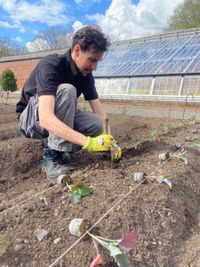
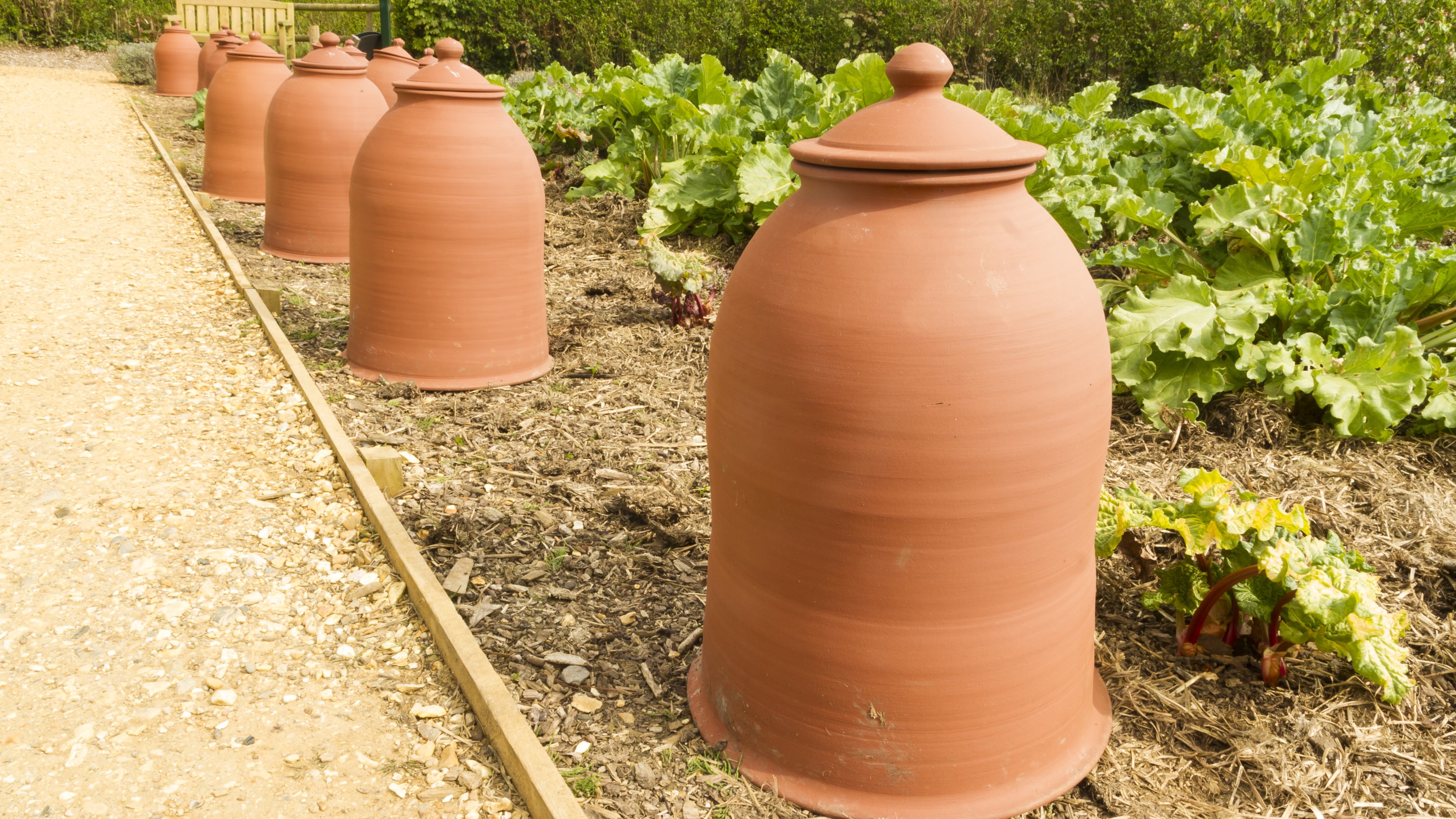
Rhubarb is a classic spring and early summer treat and its juicy delicious stems are a common sight in crumbles, cakes and tarts. By studying the old technique of forcing, you can grow rhubarb in a way that offers early and even sweeter stems.
Growing rhubarb itself is very easy and it is a plant that can be harvested for many years. The process of forcing the crown to produce an early harvest of stems is simple and one that I have always found rewarding.
It requires little tools, can be done on a budget, and is well worth the effort. Those early blanched stems are less fibrous and much more delicate in flavor, certainly less bitter than non-forced rhubarb and requiring less sugar when being cooked.
The vivid bright-pink sticks are also a sight to behold poking out of the ground in the darkness. It can be hard to resist the temptation to keep sticking your head into the pots to check their progress, which can be impressively rapid.
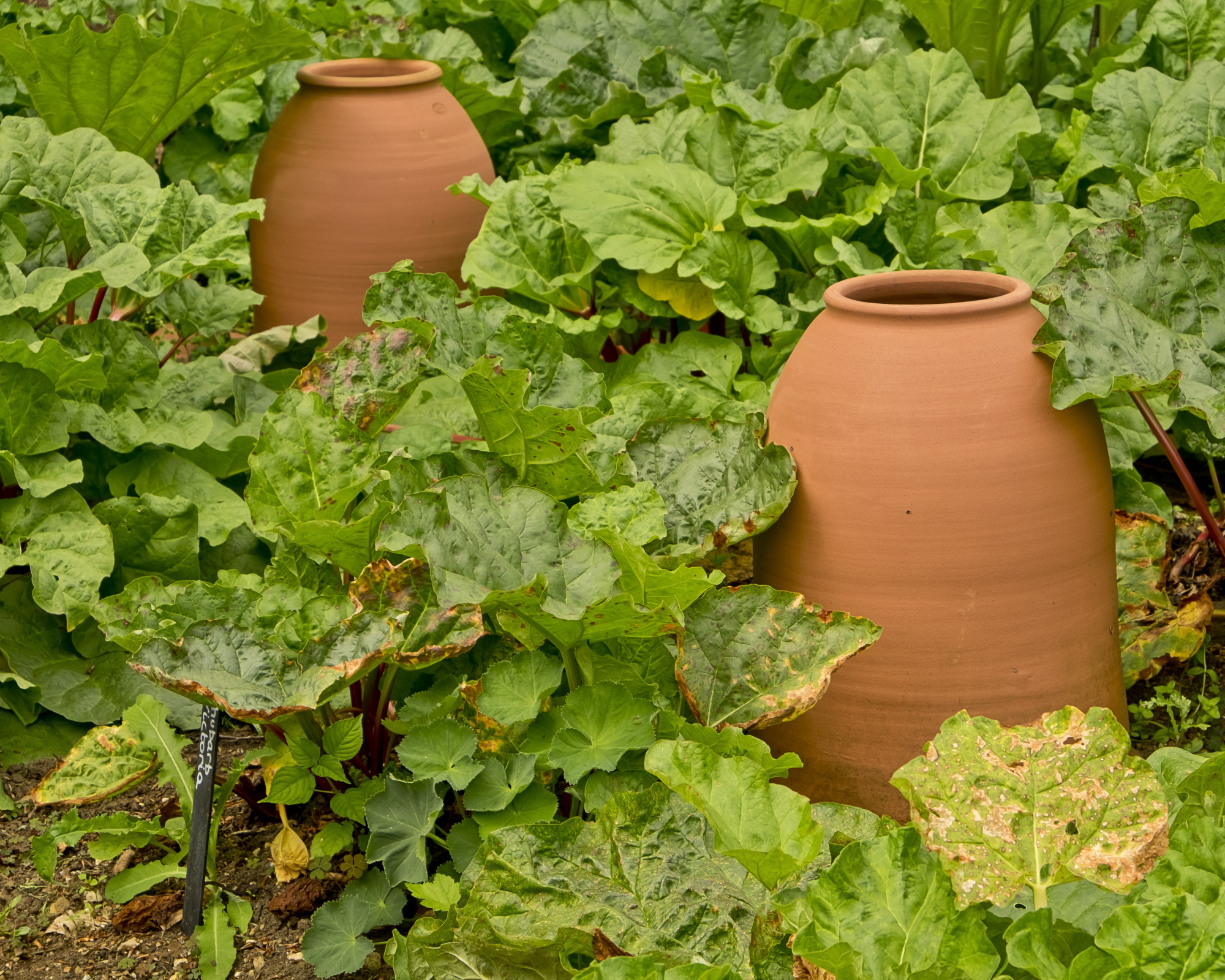
The benefits of forcing rhubarb
Forcing is a technique that has been used for more than a century to obtain earlier and more tender rhubarb stems. The crown of a dormant rhubarb plant is plunged into darkness and this encourages the production of pale, thin and sweet stalks that are ready for picking very early in the season. Forcing pots are a common sight in a kitchen garden or on allotments through the winter months.
It is the darkness and the warmth that comes from forcing that encourages the plant to grow fast in the search for light. The stalks themselves are paler in color than traditional rhubarb as the lack of sunlight stops the production of chlorophyll.
The forced stalks can be ready to harvest in early spring, many weeks before any plants left to grow as usual outside. When the plant is forced you must harvest rhubarb carefully by gently twisting and pulling the stem from the crown.
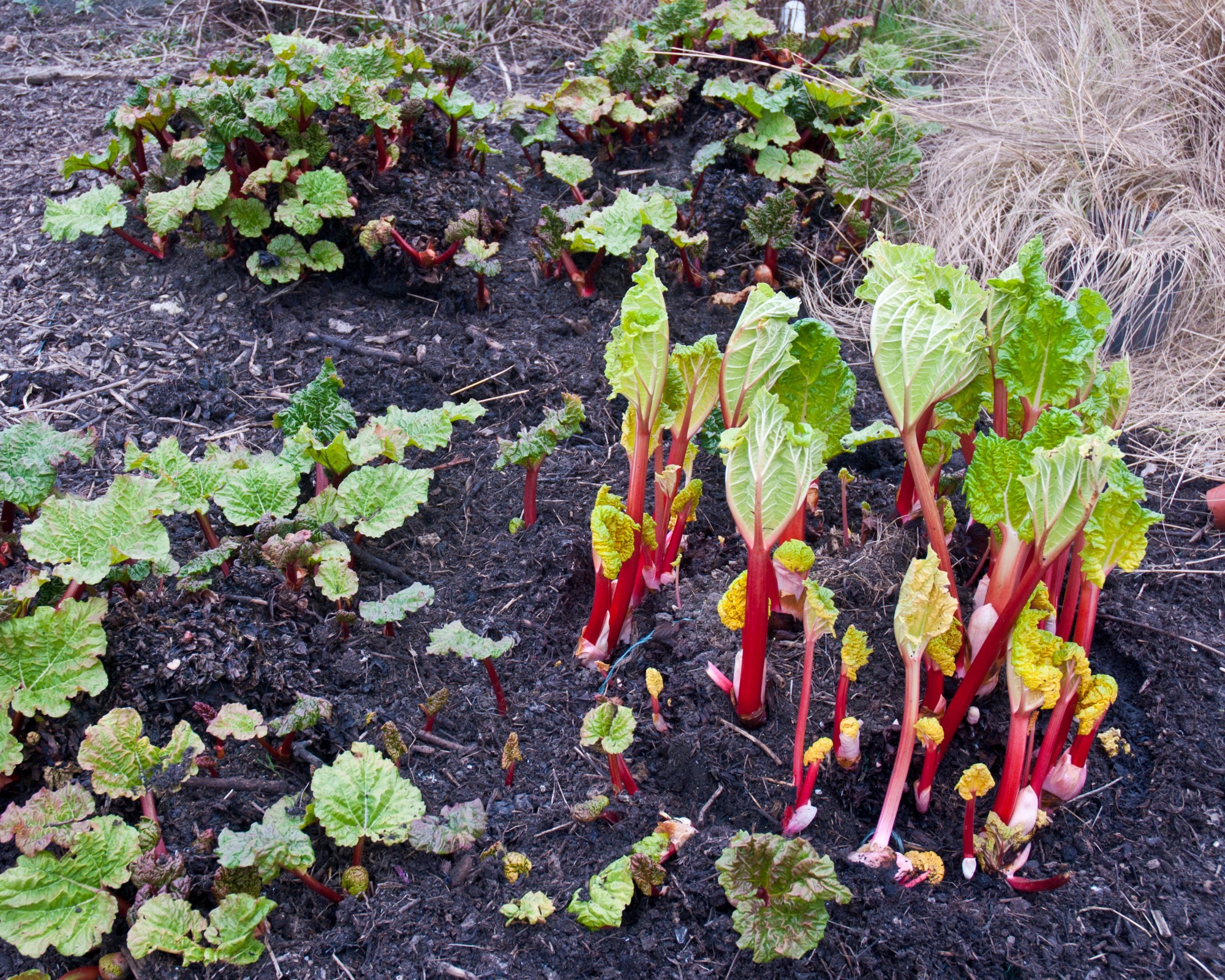
When to start forcing rhubarb
Rhubarb is forced in its dormant period in winter and the crown needs exposure to frost before being forced. It is the frost that breaks the plant’s dormancy and stimulates growth.
It is key to choose a well-established crown that has been growing outside for a minimum of two years to force. The process of forcing rhubarb will exhaust a crown, taking a great deal of energy from the plant, and a younger plant will be severely weakened. It could have its productivity for future years potentially damaged.
Always remember that any crowns forced should also not be picked in the summer of that same year. It is best to try to plan and differentiate between plants to be forced early and plants to be left for harvesting during the traditional rhubarb season when planning your vegetable planting calendar.

How to force rhubarb in 8 easy steps
There are different methods of forcing rhubarb, depending on if you want to leave the plant in the ground or move it to a different location to force.
The simplest, and most commonly seen, method of forcing rhubarb is to cover the crown in situ using a large forcing pot that covers the whole of the crown. Here's how to do it:
- Choose a healthy well-established crown that was not forced the previous year.
- Remove any debris and old leaves from the crown.
- Add a layer of mulch like compost or well-rotted manure to help provide extra nutrients and promote a strong growth of stems.
- Completely cover the rhubarb crown with a large pot without any holes for light to penetrate.
- If there are holes, such as those for drainage, cover with thick black tape.
- Mound fresh compost or manure around the pot – this can increase the heat inside and bring forward the forcing.
- The stems should be ready to harvest around 7 or 8 weeks later.
- It’s time to harvest when the pink sticks are 45-50cm long, or touching the top of the pot.
An alternative method of forcing rhubarb involves lifting crowns. This is a traditional method that sees healthy and established crowns lifted and left to sit on the ground for a period of up to 10 days. This exposes them to cold and potentially some frosts.
The crowns are then planted in compost and placed in a dark and warm environment indoors, such as a shed, garage or cupboard. If you have a greenhouse then place the plant in there and cover to exclude the light. Check the crowns regularly and keep the roots slightly moist.
Bob Flowerdew, fruit and veg expert for Amateur Gardening, advises that crowns can simply be dug and packed in buckets of sand. He does warn that the method of lifting crowns, while simple to look after, does not necessarily allow for plants to be put back outside to grow on for future years.
'These crowns require no feeding – just careful watering – and afterwards are exhausted, so are best thrown away and then replacements grown,' he adds.
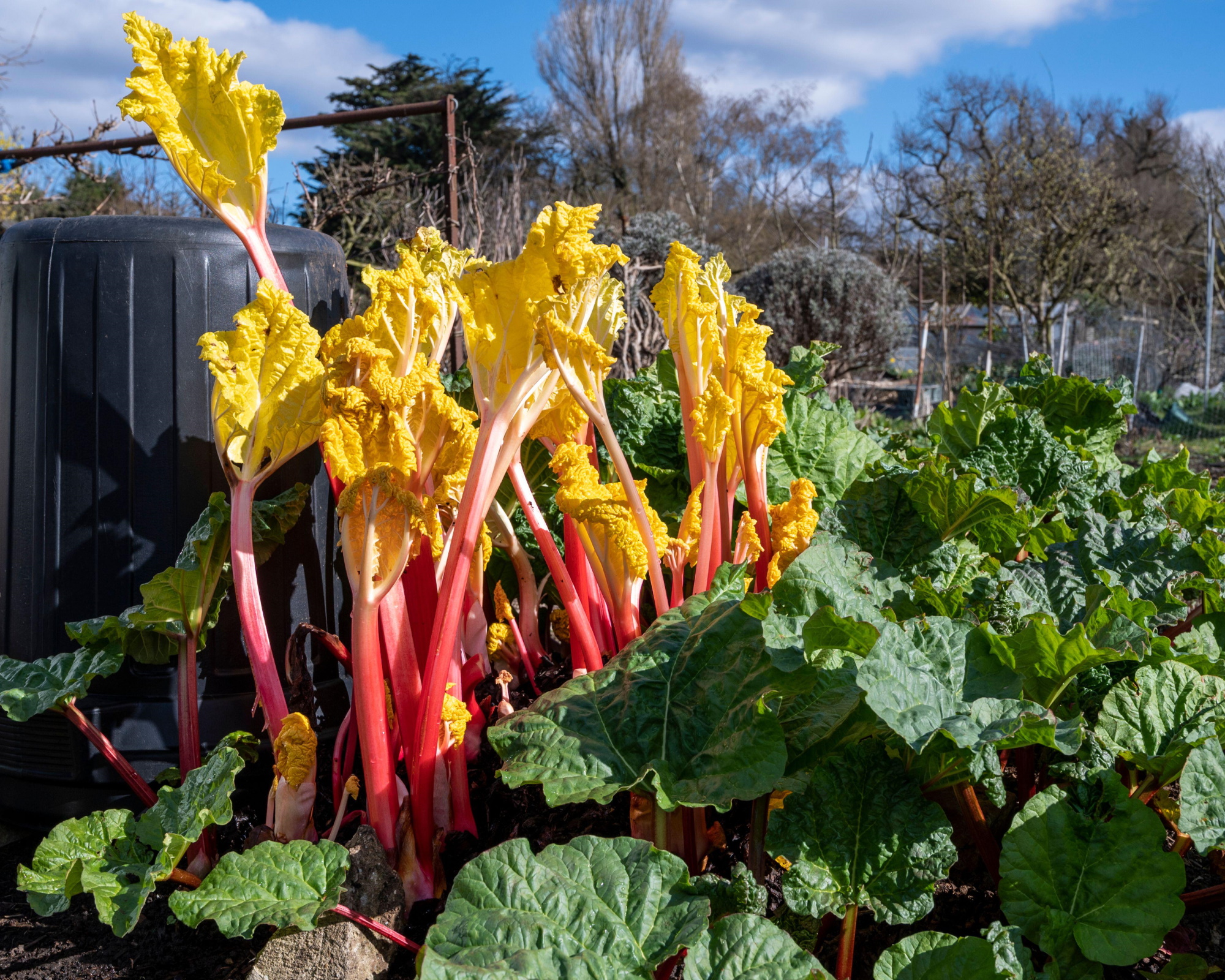
Types of forcing pots for rhubarb
Rhubarb forcing pots can come in different materials, however they do need to be large enough to completely cover the crown, deep enough to allow long stems to grow, and not transparent.
Ruth Hayes, gardening editor of Amateur Gardening, says: 'If you are a stickler for tradition, place a terracotta forcing pot over the top of the plant’s emerging crown, making sure no light can get through.
'Alternatively, a large pot or bucket will do, but do make sure they have no holes in the bottom, as light coming through will disrupt the process.'
Other options available to use as rhubarb forcing pots include plastic reproductions of terracotta forcing pots, dustbins, old chimney pots, or there are decorative forcers that can be purchased.
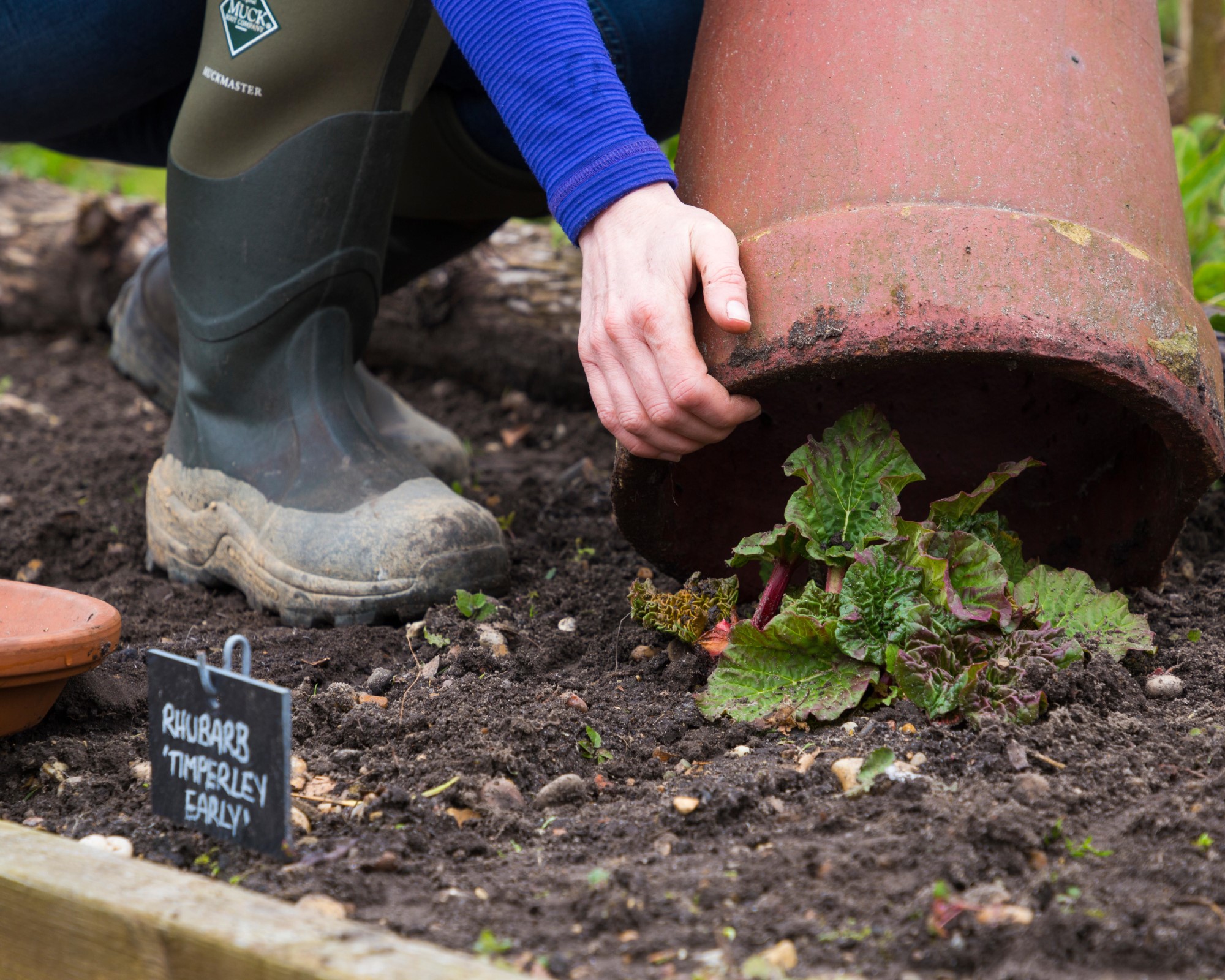
Problems with forcing rhubarb and how to solve them
Damage from pests such as slugs and snails is a common rhubarb growing problem and these pests can munch on leaves and sometimes the stalks of forced rhubarb. There are simple remedies available to make sure the plant is protected from potential pest damage.
Lucy Chamberlain, fruit and veg expert for Amateur Gardening, recommends: 'Before covering up your clump, lay some form of slug control around the crowns, such as organic slug pellets [available from Amazon] or sharp grit.'
She adds that slug control be topped up regularly as you check under the forcer for progress and start to pull individual stems. Crumbled egg shells, beer traps, or biological control methods are also good tactics for how to get rid of slugs and snails.
Forced rhubarb can suffer from botrytis, a fungus that can cause leaf and crown rot. This is caused by high humidity and a lack of proper air circulation – something that can be an issue under a forcing pot. Remove debris, old leaves, and other plant matter from the crown prior to placing the forcing pot over the clump to help combat botrytis.
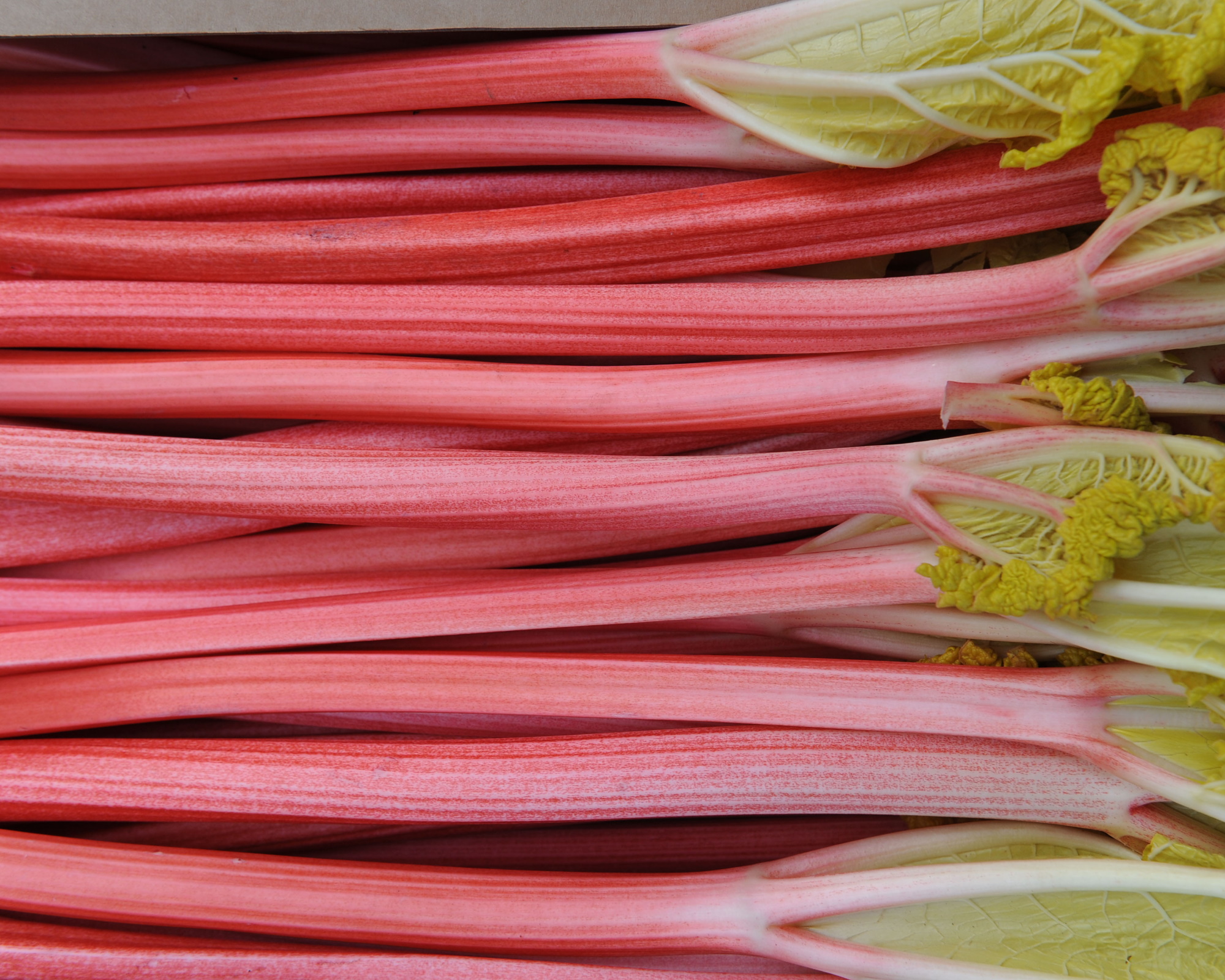
Varieties of rhubarb for forcing
Early-cropping varieties of rhubarb are the most suitable for forcing, however all varieties can be encouraged to produce stems early given the right conditions. Quicker-maturing variety of rhubarb, such as ‘Hawke’s Champagne’ or ‘Grandad’s Favourite’, are ideal for producing the earliest stems.
What is the difference between rhubarb and forced rhubarb?
Rhubarb is grown for its edible tender stems that are used like fruit, commonly in desserts, in spring and early summer. It is a plant that can produce an abundance of stems for many years without much fuss and the traditional rhubarb season tends to run from mid spring to mid summer.
Rhubarb is very versatile and can be grown in the ground, in raised garden beds, or in planters if you prefer growing fruit in pots. It benefits from a mulch of well-rotted compost every spring and the removal of flower stalks as they appear. Not fertilizing plants regularly is a common mistake when growing rhubarb.
Forced rhubarb is the term that applies to the same plants being grown out of season in darkness. This method speeds the growing of paler, thinner stems and allows for harvesting up to a month earlier than non-forced plants.
Home gardeners can force rhubarb simply by covering the clump with pots or buckets, while commercial growers will have thousands of plants growing in darkness in large sheds.
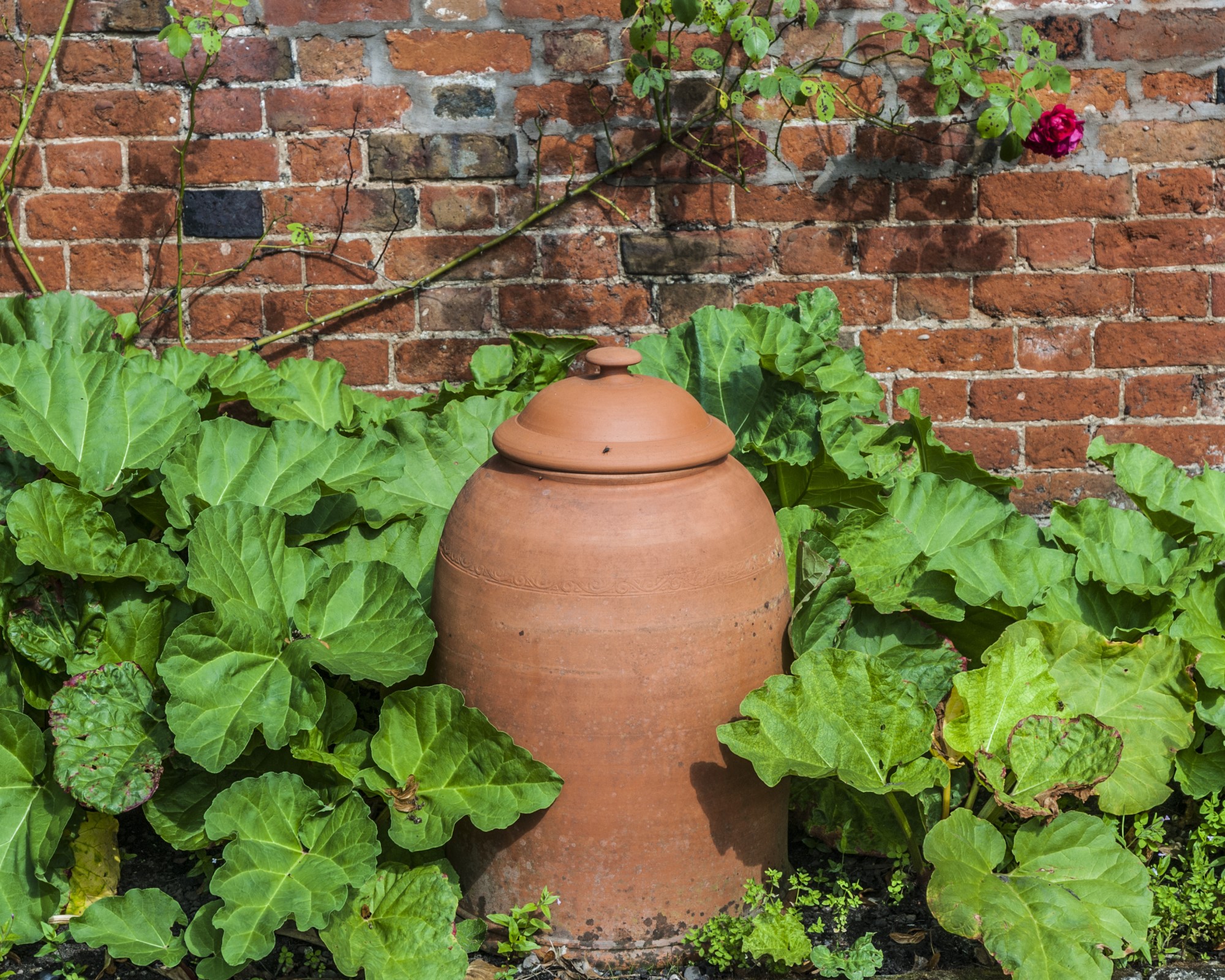
Can you hear forced rhubarb growing?
Forced rhubarb reportedly grows at a rate of over an inch a day. The speed in which the stems grow is far faster than non-forced rhubarb. Forced rhubarb creates its own distinctive soundtrack of cracking, popping and screeching.
Rhubarb buds cracking open before leaves unfurl actually make a distinctive ‘popping’ sound and the rapid growth of stems causes creaks and groans.
In the sheds of commercial growers, where huge numbers of crowns are packed together and forced in darkness, you can vividly hear these sounds created by the rhubarb growing and rubbing together.
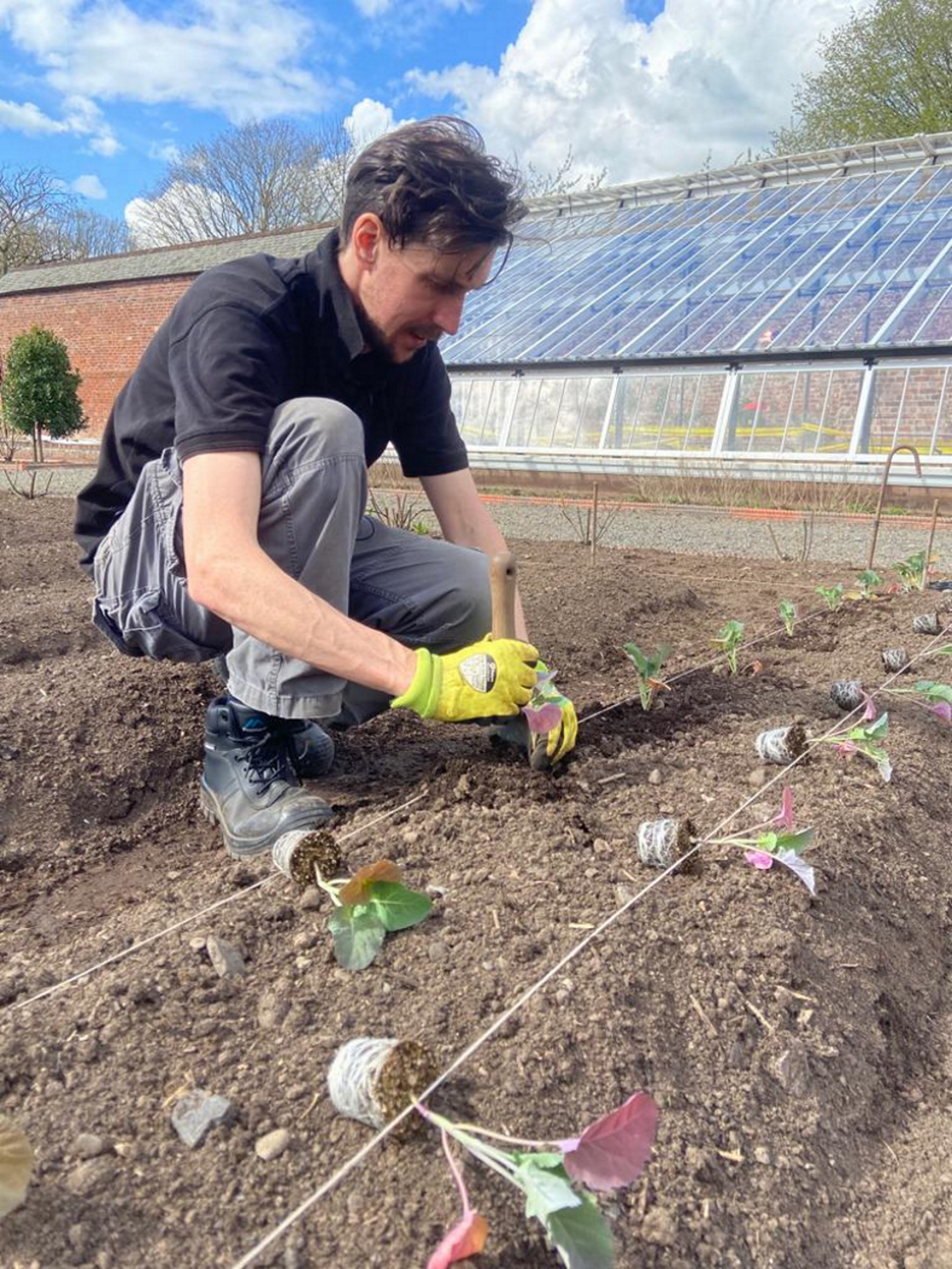
Drew’s passion for gardening started with growing vegetables and salad in raised beds in a small urban terrace garden. He has gone on to work as a professional gardener in historic gardens across the UK and also specialise as a kitchen gardener growing vegetables, fruit, herbs, and cut flowers. That passion for growing extends to being an allotmenteer, garden blogger, and producing how-to gardening guides for websites.
